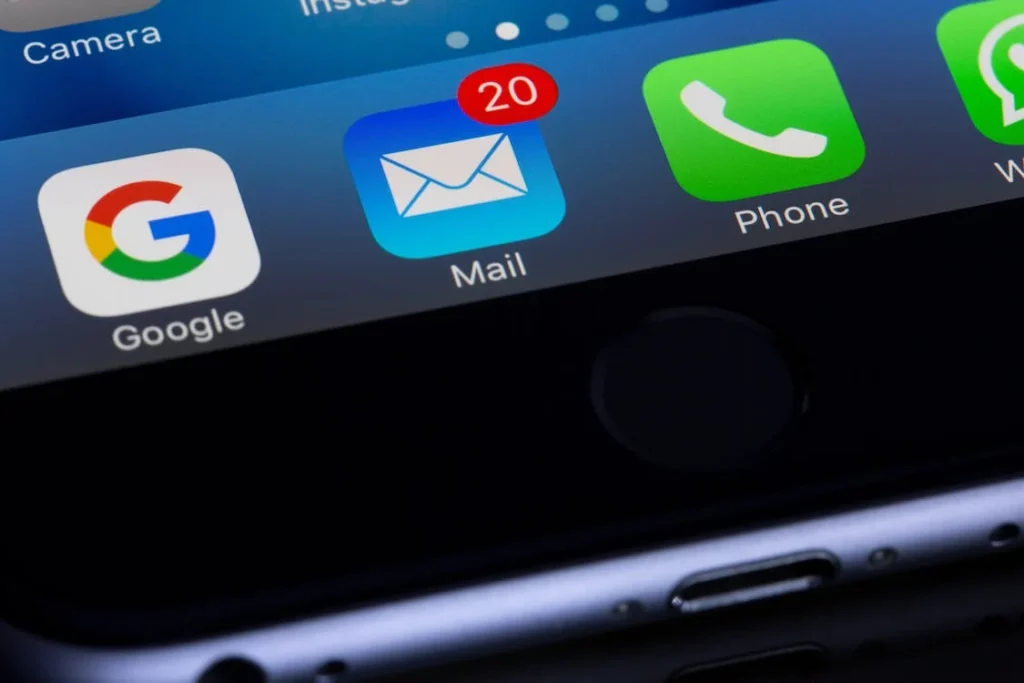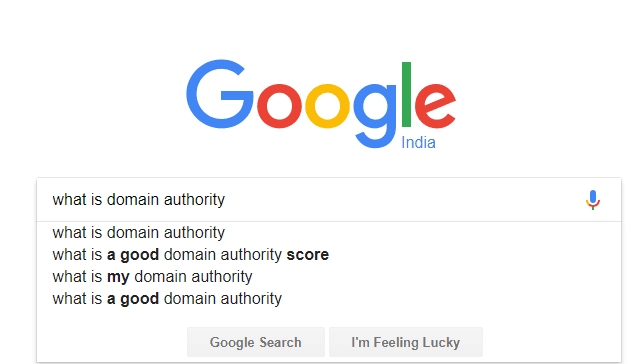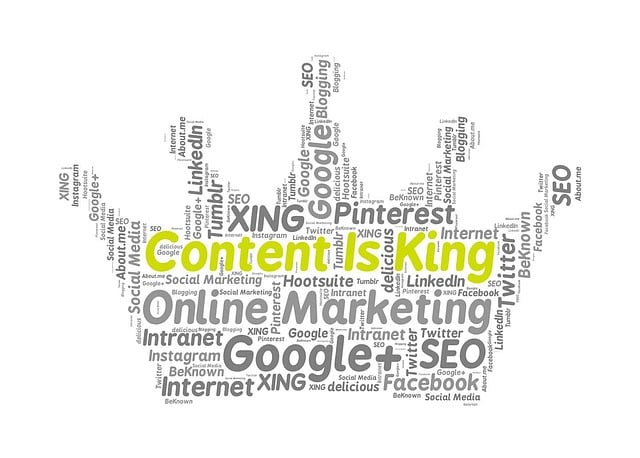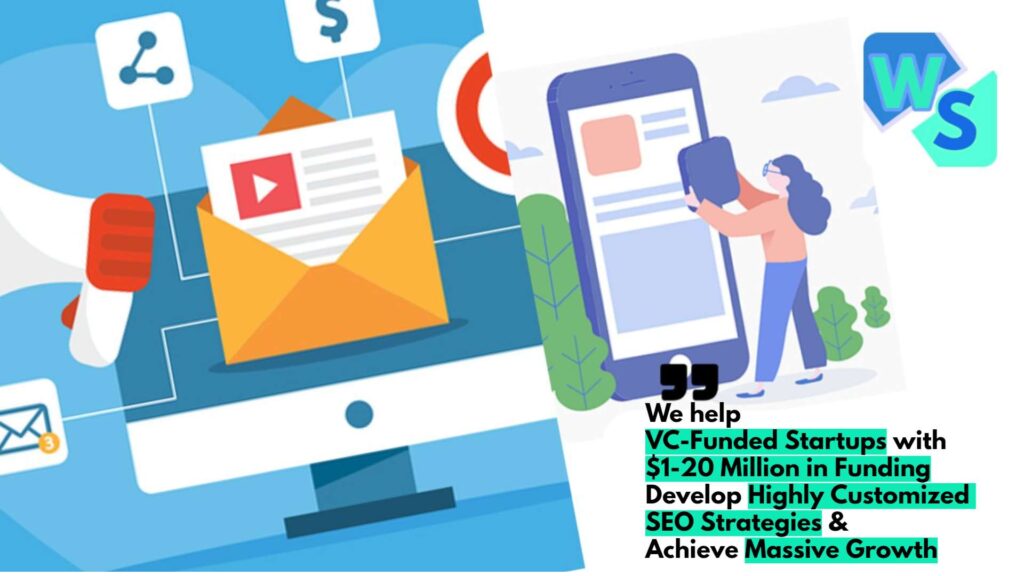Understanding Digital Customer Experience
Importance of Digital CX
I know digital customer experience (CX) is more than just a fleeting fad; it’s essential for making a business tick. Stats say brands that juggle multiple ways to chat with their customers hold on to around 89% of ’em. Meanwhile, those with shaky methods manage to keep only 33% on board (Qualtrics). That’s a massive difference, a clear signal that blending different avenues to boost customer happiness is crucial.
With folks glued to mobile screens more than desktops these days, the emphasis on digital CX is growing. A whopping 82% of buyers reach for their phones when choosing what to buy, often opting for web or mobile self-help over making calls. Changing the playbook to match customer habits just makes plain sense.
Impact of Digital Customer Experience
When digital customer experiences fall flat, businesses can take a hit. We’re chatting about a whopping $4.7 trillion slipping away yearly (Qualtrics). This isn’t just a figure; it’s a big ol’ nudge to focus on spicing up customer satisfaction with sharp digital strategies.
Mixing X-data (think customer satisfaction scores) with O-data (like operational stats) is key to tailoring customer journeys. This combo doesn’t just smooth out the customer path; it cranks up conversion rates and nudges growth upward (Qualtrics).
I keep an eagle eye on metrics like conversion rates, how often folks use our services, and the average time spent on customer service calls. These numbers aren’t just a run-through of satisfaction—they’re a goldmine of insights into how folks are interacting with my business (Zight). By sharpening my digital CX, I’ve got my sights set on standing out in the crowd and driving my business forward.
Key Elements of Digital CX Strategy
When I’m piecing together a winning digital customer experience plan, I hone in on the stuff that really counts. You know, the kind of things that seamlessly tie into what I’m trying to achieve in business. My go-to tools are omnichannel communication, personal touches, and making sure everything looks and feels right, no matter what gadget someone is using.
Omnichannel Approach
You can’t throw a rock without hitting some stat that proves having a solid omnichannel game is a must. Basically, if I’m nailing it, I’ll keep about 89% of my loyal fan base, unlike those businesses that seem to forget what customer engagement even means. Integrating channels isn’t just a buzzword around here—it’s about making all the parts work like a well-oiled machine to make my customers happy.
Cutting through the internal noise and getting rid of silo thinking is my mission. If I mess this up, it might cost the whole shop, like $4.7 trillion a year, just because we didn’t put the customer front and center. So, keeping things smooth and simple across every interaction means more than just keeping folks coming back—it’s about turning them into real supporters of what I do.
Personalization Strategies
Getting personal with my customers goes beyond addressing them by their name in emails. It’s about really diving into what they like and how they behave, using a mix of experience and operational data. This way, every interaction feels like it was meant just for them, leading to more sales and bumping up my revenue.
By tuning into their unique vibes, whether it’s through product suggestions or perfectly timed messages, I create experiences they won’t forget. After all, when someone feels like they’ve had an experience curated just for them, they’re more likely to come back for more.
Cross-Device Experience
Everyone’s bouncing between their phones, tablets, and desktops these days, which means I need to stay on my toes. Back in 2016, mobile truly took the lead over desktops, so being flexible in this area isn’t just nice-to-have—it’s essential.
The game is to make sure that anyone visiting my site gets a smooth ride, whether on a teeny phone screen or a giant computer monitor. The idea is to keep the experience flowing, no matter what. This effort helps create a reliable brand presence and makes sure customers stick around for the long haul.
In the ever-changing digital experience scene, these crucial elements—being everywhere my customers are, personalizing interactions, and keeping the experience consistent no matter the device—make up the heart of a smart strategy. By blending these factors, I’m not just aiming to satisfy customers but to forge genuine, enduring relationships.
Enhancing Digital Customer Experience
When I’m out to boost the digital customer experience, I make sure I look into a few key things—like figuring out customer paths, using data to add a personal touch, and tuning up all those digital places my customers might meet me. Each bit’s got a role to play in making sure they can get what they’re after, hassle-free, when they’re dealing with my business.
Customer Journey Mapping
With customer journey mapping, I get a peek at every step a customer takes from spotting my brand to how things go after they’ve bought something. This map helps me see where they might hit a bump or where I can make things better for them.
| Stage of Customer Journey | What Happens Here | How To Up My Game |
|---|---|---|
| Awareness | Ads pop up, chats on social media, folks talking | Dial in those ad targets based on what folks are up to |
| Consideration | Checking out the website, comparing stuff | Clean up site navigation so info’s at their fingertips |
| Purchase | Cart to checkout dance | Get payment options zipping along faster |
| Post-Purchase | They give feedback, I give support | Send out surveys to see how they’re feeling |
When I get the feel of these steps, I can line up my strategies to fit just right with what my customers expect and need.
Data Analytics for Personalization
Using data is my go-to for giving that personal touch. By diving into customer data, I get a hang of what folks are buying and how they shop around. This lets me craft marketing that speaks to them and suggest products they might actually want.
Some key stats I track with data tools:
| Metric | What’s It Mean? |
|---|---|
| Conversion Rate | How many visitors turn into buyers? |
| Average Order Value | On average, how much do they spend? |
| Customer Segmentation | Grouping similar buyers for sharper targeting |
This means I can send emails they’ll actually read, offer them products they’ll probably like, and tweak content just for them.
Digital Touchpoints Optimization
Giving customer experience touchpoints a good polish makes sure every brand interaction runs smooth like butter. I streamline spots like websites, apps, and support channels to keep everything consistent.
Here’s how I keep digital touchpoints in top shape:
| Touchpoint | Optimization Tactic |
|---|---|
| Website | Speed it up, make sure it looks good on phones |
| Social Media | Keep the chat flowing and jump on questions fast |
| Email Marketing | Tailor what’s sent and who it goes to for more impact |
Checking how well these tactics perform with things like conversion rates and engagement levels shows me if the effort’s paying off. By tweaking touchpoints on the regular, I can offer a more gripping and satisfying digital experience.
In short, improving digital customer experience calls for a combo of mapping the customer journey, using data to personalize their path, and finetuning digital touchpoints for slick interactions. Each gear in this machine cranks up customer happiness and loyalty, laying down a solid runway for business to soar. If you’re keen on more ways to boost customer experience, take a look at customer experience management strategies.
Measuring Digital CX Effectiveness
In the wild world of digital customer experience (CX), figuring out how well it’s working is the name of the game. I’ve found that diving into some good old numbers – Key Performance Indicators (KPIs), satisfaction scores, and loyalty data – lets me check if I’m on the right track or if I need to tweak things a little.
Key Performance Indicators (KPIs)
KPIs are like the scorecards for my CX strategy – they help me figure out if I’m winning or losing. They provide cool insights that match up with what I’m trying to do with my business. Some heavy-hitter KPIs include conversion rates, how often folks use my service, how quick I am to respond, and how long it takes me to sort out customer problems.
| KPI | What’s It Tell Me? |
|---|---|
| Conversion Rate | How many folks do what I want, like buying stuff |
| Usage Rate | How often folks come back and use my service |
| First Response Time | How quick I am at getting back to questions |
| Average Handling Time | How long it takes to fix customer problems |
Keeping an eye on these numbers gives me a feel for customer happiness and how smooth their experience is from start to finish. When I spot dodgy DVs, it’s a sign for some fine-tuning, which can make customers pretty happy.
Customer Satisfaction Metrics
Checking how satisfied customers are is a must. I use things like the Net Promoter Score (NPS), which asks customers if they’d give my business a shoutout to friends. A high score means they’re digging my stuff, and I’ve got a shot at snagging more customers through word of mouth. If it’s low, there’s some work to do.
| Customer Satisfaction Metric | What’s It All About? |
|---|---|
| Net Promoter Score (NPS) | Checks if customers are keen to recommend |
| Customer Churn Rate | Percentage of folks leaving for good |
Getting the hang of these numbers is important to know if customers are vibing with my brand. I’m big on pouncing on inquiries fast because it lifts spirits and makes customers think nice thoughts about my business, boosting the chances they’ll stick around (learn how to boost your CX).
Loyalty and Retention Metrics
Loyalty and retention metrics give a peek into how tight my business is keeping hold of its customers. By seeing who’s dropping off and who’s coming back for more, I can gauge if my CX tricks are working their magic.
| Loyalty and Retention Metric | What’s It Say? |
|---|---|
| Churn Rate | How many folks aren’t sticking around |
| Repeat Purchase Rate | How many are coming back for seconds |
These numbers help me suss out if my CX efforts are keeping folks around for the long haul. When these rates rise, it means a solid, loyal following, which is what we’re shooting for in CX (get the lowdown on CX management).
So, hunting down these digital CX scores and understanding what’s behind them is mega important. These insights shape my plans and ensure I’m always crafting a better experience for every customer who stops by.
Strategies for Improving Digital CX
Alright, let’s jump into making that digital customer experience (CX) as smooth as a fresh latte on a Monday morning. I’ve got some tricks up my sleeve—like channel flexibility, making life easier with convenient services, and throwing in personalized touches to keep your business vibes high and your customers happy. Each of these makes the ride a whole lot smoother for folks tapping away at their screens.
Channel Flexibility
Channel flexibility is about letting people hop around between seeing what you offer online, on their phones, and when they’re out and about, all without missing a beat. Think of it like a playlist that flows seamlessly at a party. Studies show taking down those internal barriers can save businesses a massive $4.7 trillion each year—yeah, that’s some serious cash staying put (Qualtrics).
| Benefits of Channel Flexibility | Description |
|---|---|
| Happier Customers | Folks dig a steady experience, which means they’re likely to stick around and maybe even tell their friends. |
| More People Sticking Around | If they’ve got multiple ways to interact, they’re more likely to hang out than split to a competitor. |
I’m all about weaving an omnichannel vibe so whether they’re clicking or chatting, the support feels like a blanket fresh out of the dryer.
Service Convenience
Let’s face it, almost everyone’s glued to their phones or tablets these days, and not just to check the weather. I’m making sure my services are ready whenever and wherever, helping folks help themselves with web and mobile options. It’s about being fast and handy—like that snack stash hidden at work (Qualtrics).
| Key Aspects of Service Convenience | Examples |
|---|---|
| Do-It-Yourself Tools | FAQs, chatbots, and how-to videos that let people solve problems without waiting for anyone. |
| Smooth Sailing | Quick website loads and easy-peasy navigation on your apps. |
By upping the convenience factor, my aim is for folks to want to swing by more often, and everybody leaves a little happier than when they came.
Personalized Interactions
This one’s all about knowing your people, like favorite toppings on their pizza. Personalizing interactions means you’re not just another face in the crowd—you’re someone they wanna do business with. Give them the right nudge with product suggestions or messages that speak to them, and that goodwill shoots way up (AskNicely).
| Advantages of Personalized Interactions | Impact |
|---|---|
| More Of Their Time and Interest | Customers feel like you get them, so they spend more time with your brand. |
| Less Switching | When they’re happy, they’re not looking for greener pastures (Omniconvert). |
I’m diving into what people like and don’t like so my customer experiences have that personal, warm touch that keeps them coming back for more.
So by zeroing in on giving people options, keeping things easy, and adding that personal flair, I’m working toward making the digital CX as friendly and effective as it can get—channeling a bit of Saturday cozy into every interaction.
Implementing Digital CX Technologies
I’ve been on a mission to amp up the way customers experience my digital offerings, and the right tech has been my secret weapon. There are three main tech gadgets I’m putting to work: AI chatbots, digital contact centers, and customer data platforms. Each plays a huge part in making things smooth and pleasurable for anyone who interacts with my brand.
AI-Powered Chatbots
AI chatbots are becoming the go-to in modern customer service game plans. Nearly everyone, that’s 90% of folks, reckon brands should have a spot online where you can help yourself (Qualtrics). These chatbots are like little helpful elves working around the clock. They’re great for shooting answers back for everyday questions or guiding people when they’re buying something.
Plus, they spice up how a customer feels by dishing out replies that seem tailor-made just for them, based on what they’ve already shared. Customers end up leaving more satisfied, and my team’s workload lightens because they’re left to focus on the trickier stuff. Honestly, plugging chatbots into my strategy has been golden.
| Benefit | Explanation |
|---|---|
| Always-on Help | Ready to assist anytime |
| Saves Money | Cuts back on the need for big support teams |
| Custom Replies | Crafts answers from what it knows about the user |
Digital Contact Centers
Digital contact centers are like an upgrade in making customer chats awesome. They bring email, chat, calls, social media—you name it—into one spot, creating a seamless interaction platform.
An effective strategy here is that it tracks what a person likes across different platforms to help serve them better. With this tool, I’ve been able to keep tabs on what everyone prefers and tweak the whole guest-greeting process without a hitch.
| Part of the Deal | Why It’s Useful |
|---|---|
| All-in-One Screen | Puts all chats in one place for easier handling |
| More Data, More Insight | Collects info from all over for deeper understanding |
| Faster Fixes | Resolves issues quicker with streamlined talks |
Customer Data Platforms
Imagine a customer data platform like a vault where all customer interactions from across the map are stored—giving a big-picture view of their likes and habits. The magic of making experiences personal lies in accurate, thoughtful data (Adobe Business Blog).
With this platform, I can study what makes users tick, tailor suggestions to their tastes, and fine-tune marketing messages to exactly what they need. It’s a powerful way to build trust and keep customers coming back.
| Superpower | What It Does |
|---|---|
| One-Stop Data Hub | Mixes various user information efficiently |
| Quick Truths | Offers immediate insights from the data collected |
| Design for You | Provides experiences that feel custom-made for each user |
Getting chatbots, digital contact hubs, and data platforms into the mix has really lifted the bar for my digital customer experience. These tech tools not only make doing business more straightforward but also lead to customers feeling valued and more engaged. If stepping up your interaction game is on your agenda, these tools are like having a Swiss army knife in your pocket.
Evolving Trends in Digital CX
As I keep an eye on the biz scene, it’s obvious that the way folks experience things digitally is always changing at lightning speed. This sets the stage for fresh trends that movers and shakers, including CEOs, business owners, and marketing bigwigs, need to wrap their heads around to keep up.
Mobile-Only Customers
The rise of our “glued-to-the-phone” crowd is shaking up how companies handle digital experiences. According to TTEC, these folks are all about using their phones and gadgets to do business. It’s not just a passing phase—it’s a permanent shift in how people behave, especially since the number of mobile app and tablet users beat out desktop users back in 2016.
| Year | Mobile Usage (%) | Desktop Usage (%) |
|---|---|---|
| 2016 | 82 | 18 |
Those stats show how critical mobile is becoming, with 82% of folks using their phones to decide on products (Qualtrics). To keep up, businesses gotta get their stuff mobile-friendly and easy to access, or they’ll miss the boat on keeping their customers happy.
Blurring Online-Offline Experiences
The adventure between online and in-store experiences is getting fuzzier by the day. Customers want the same smooth ride whether they’re digital or face-to-face. The winners in the game will be those blending their digital and physical services effortlessly. For example, customers are now using mobile banking, virtual customer support, and interactive shopping apps, creating a bridge between screen and sidewalk.
About three out of four customers use a mix of channels to make purchases, shining the spotlight on the need for an omnichannel customer experience (Adobe Business Blog). The demand for fluid interaction across all platforms is flipping the playbook for customer service strategies.
Personalization in Content Selection
These days, personalization isn’t just a nice touch—it’s a must. More than half of customers expect a tailored experience from start to finish. Crafting a digital journey involves serving up content that hits just right with individual preferences. For this to work, companies lean on beefed-up customer experience analytics and real-time data tracking to ace personalization.
As more businesses crack the code with data insights, the pressure’s on to make customer experiences feel personal. Folks want brands to know them and throw in useful nuggets along the way, making their journey all the more meaningful.
Tapping into these budding trends in digital customer experience not only keeps me in the loop but also helps me whip up killer strategies. By homing in on mobile readiness, meshing online and offline worlds, and championing personalization, I can crank up customer satisfaction and loyalty to new heights.
Case Studies on Digital Customer Experience
Checking out how others have nailed digital customer experience (CX) can give me some gold nuggets to spruce up my business plan. Let’s look at a trio of standout tales: Uber’s knack for loyalty, Netflix’s subscriber surge, and the unforgettable service of The Ritz-Carlton.
Uber’s Customer Loyalty
Uber’s got a real knack for keeping its users back in the seat. A cool 75% of folks in the U.S. are likely to hail another ride. What’s their secret sauce? They zeroed in on what bugs their customers and smoothed out those wrinkles. With features like user and driver ratings, they keep everyone playing nice, and with in-app credit card payments, spending is just a tap away. No fumbling with cash, no hassle—just ride and go.
| Metric | Value |
|---|---|
| Likelihood to Use Again | 75% |
| App Rating | 4.8/5 (average) |
| Customer Retention Rate | 67% (approx.) |
By tackling those customer annoyances head-on, Uber boosts satisfaction and loyalty.
Netflix’s Subscription Growth
Netflix plays in the big leagues with a customer loyalty score cruising at 88%. How do they do it? They give a hoot about what viewers like. By keeping tabs on what folks watch, Netflix serves up suggestions that hit the sweet spot more often than not. With options galore, from a free trial to no pesky ads, Netflix keeps user experiences smooth and satisfying.
| Metric | Value |
|---|---|
| Customer Loyalty Score | 88% |
| Number of Paid Subscriptions | Over 230 million |
| Average Watch Time | 3.2 hours/day |
Personal touches make all the difference, keeping Netflix a top pick in the streaming marathon.
The Ritz-Carlton’s Exceptional Service
The Ritz-Carlton’s service is the stuff of legends. Pulling in a 5-star TripAdvisor rating and an 81% loyalty score, they’ve snagged the prestigious Malcolm Baldrige National Quality Award. Twice. Their magic lies in anticipating guest whims and pulling off experiences that wow, time after time.
| Metric | Value |
|---|---|
| TripAdvisor Rating | 5 stars |
| Customer Loyalty Score | 81% |
| Awards Received | 2 Malcolm Baldrige Awards |
Creating pure hospitality magic, Ritz-Carlton trades in lasting customer bonds.
These stories show how nailing CX and being customer-focused can keep folks coming back. Want to know more about making your digital CX top notch? Check out our tips on customer experience metrics and improving customer experience.


















